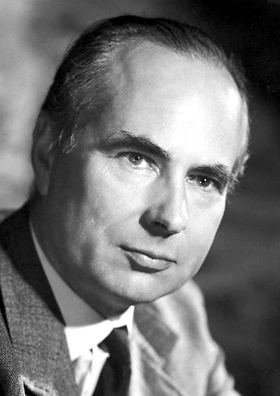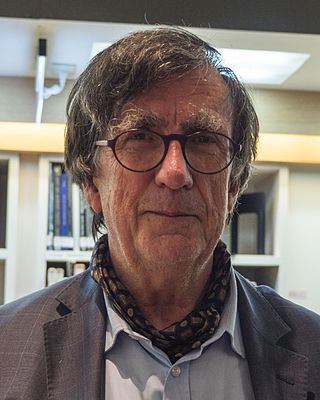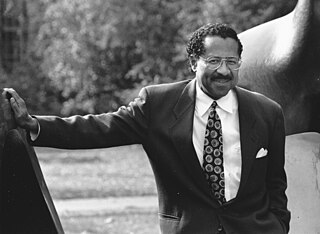Related Research Articles

Francis Harry Compton Crick was an English molecular biologist, biophysicist, and neuroscientist. He, James Watson, Rosalind Franklin, and Maurice Wilkins played crucial roles in deciphering the helical structure of the DNA molecule.

Max Ferdinand Perutz was an Austrian-born British molecular biologist, who shared the 1962 Nobel Prize for Chemistry with John Kendrew, for their studies of the structures of haemoglobin and myoglobin. He went on to win the Royal Medal of the Royal Society in 1971 and the Copley Medal in 1979. At Cambridge he founded and chaired (1962–79) The MRC Laboratory of Molecular Biology (LMB), fourteen of whose scientists have won Nobel Prizes.

Fiber or fibre is a natural or artificial substance that is significantly longer than it is wide. Fibers are often used in the manufacture of other materials. The strongest engineering materials often incorporate fibers, for example carbon fiber and ultra-high-molecular-weight polyethylene.

Sir Andrew Fielding Huxley was an English physiologist and biophysicist. He was born into the prominent Huxley family. After leaving Westminster School in central London, he went to Trinity College, Cambridge, on a scholarship, after which he joined Alan Hodgkin to study nerve impulses. Their eventual discovery of the basis for propagation of nerve impulses earned them the Nobel Prize in Physiology or Medicine in 1963. They made their discovery from the giant axon of the Atlantic squid. Soon after the outbreak of the Second World War, Huxley was recruited by the British Anti-Aircraft Command and later transferred to the Admiralty. After the war he resumed research at the University of Cambridge, where he developed interference microscopy that would be suitable for studying muscle fibres.

Robert Sedgewick is an American computer scientist. He is the founding chair and the William O. Baker Professor in Computer Science at Princeton University and was a member of the board of directors of Adobe Systems (1990–2016). He previously served on the faculty at Brown University and has held visiting research positions at Xerox PARC, Institute for Defense Analyses, and INRIA. His research expertise is in algorithm science, data structures, and analytic combinatorics. He is also active in developing college curriculums in computer science.
The Royal Radar Establishment was a research centre in Malvern, Worcestershire in the United Kingdom. It was formed in 1953 as the Radar Research Establishment by the merger of the Air Ministry's Telecommunications Research Establishment (TRE) and the British Army's Radar Research and Development Establishment (RRDE). It was given its new name after a visit by Queen Elizabeth II in 1957. Both names were abbreviated to RRE. In 1976 the Signals Research and Development Establishment (SRDE), involved in communications research, joined the RRE to form the Royal Signals and Radar Establishment (RSRE).

Bruno Latour was a French philosopher, anthropologist and sociologist. He was especially known for his work in the field of science and technology studies (STS). After teaching at the École des Mines de Paris from 1982 to 2006, he became professor at Sciences Po Paris (2006–2017), where he was the scientific director of the Sciences Po Medialab. He retired from several university activities in 2017. He was also a Centennial Professor at the London School of Economics.

Brian David Josephson is a British theoretical physicist and professor emeritus of physics at the University of Cambridge. Best known for his pioneering work on superconductivity and quantum tunnelling, he was awarded the Nobel Prize in Physics in 1973 for his prediction of the Josephson effect, made in 1962 when he was a 22-year-old PhD student at Cambridge University. Josephson is the first Welshman to have won a Nobel Prize in Physics. He shared the prize with physicists Leo Esaki and Ivar Giaever, who jointly received half the award for their own work on quantum tunnelling.

Sir Nevill Francis Mott was a British physicist who won the Nobel Prize for Physics in 1977 for his work on the electronic structure of magnetic and disordered systems, especially amorphous semiconductors. The award was shared with Philip W. Anderson and J. H. Van Vleck. The three had conducted loosely related research. Mott and Anderson clarified the reasons why magnetic or amorphous materials can sometimes be metallic and sometimes insulating.
Sajeev John, OC, FRSC is a Professor of Physics at the University of Toronto and Canada Research Chair holder. He is known for his discovery of photonic crystals.

William Thomas Astbury FRS was an English physicist and molecular biologist who made pioneering X-ray diffraction studies of biological molecules. His work on keratin provided the foundation for Linus Pauling's discovery of the alpha helix. He also studied the structure for DNA in 1937 and made the first step in the elucidation of its structure.
Sir Michael Pepper is a British physicist notable for his work in semiconductor nanostructures.
Applied mechanics is the branch of science concerned with the motion of any substance that can be experienced or perceived by humans without the help of instruments. In short, when mechanics concepts surpass being theoretical and are applied and executed, general mechanics becomes applied mechanics. It is this stark difference that makes applied mechanics an essential understanding for practical everyday life. It has numerous applications in a wide variety of fields and disciplines, including but not limited to structural engineering, astronomy, oceanography, meteorology, hydraulics, mechanical engineering, aerospace engineering, nanotechnology, structural design, earthquake engineering, fluid dynamics, planetary sciences, and other life sciences. Connecting research between numerous disciplines, applied mechanics plays an important role in both science and engineering.
John Fleetwood Baker, Baron Baker, was a British scientist and structural engineer.

The Department of Materials Science and Metallurgy (DMSM) is a large research and teaching division of the University of Cambridge. Since 2013 it has been located in West Cambridge, having previously occupied several buildings on the New Museums Site in the centre of Cambridge.
Satya Atluri was an Indian American engineer, educator, researcher and scientist in aerospace engineering, mechanical engineering and computational sciences, who was a Distinguished Professor Emeritus of Aerospace Engineering at the University of California, Irvine. Since 1966, he made fundamental contributions to the development of finite element methods, boundary element methods, Messless Local Petrov-Galerkin (MLPG) methods, Fragile Points Methods, Local Variational Iteration Methods, for general problems of engineering, solid mechanics, fluid dynamics, heat transfer, flexoelectricity, ferromagnetics, gradient and nonlocal theories, nonlinear dynamics, shell theories, micromechanics of materials, structural integrity and damage tolerance, Orbital mechanics, Astrodynamics, digital Twins of Aerospace Systems, etc.

The Hanoi University of Civil Engineering, formerly known as the National University of Civil Engineering (NUCE), is a public higher education institution in Vietnam. The university is one of the leading universities and among the top seven engineering universities in Vietnam.

Mark Andrew Miodownik is a British materials scientist, engineer, broadcaster and writer at University College London. Previously, he was the head of the Materials Research Group at King's College London, and a co-founder of Materials Library.

James Henry Williams Jr. is a mechanical engineer, consultant, civic commentator, and teacher of engineering. He is currently Professor of Applied Mechanics in the Mechanical Engineering Department at the Massachusetts Institute of Technology (MIT). He is regarded as one of the world's leading experts in the mechanics, design, fabrication, and nondestructive evaluation (NDE) of nonmetallic fiber reinforced composite materials and structures. He is also Professor of Writing and Humanistic Studies at MIT.
John Donald Currey, was a British zoologist who lectured at the University of York where he specialised in the biomechanics of mineralised tissues such as bone.
References
- ↑ "Professor James Gordon; Obituary". The Times (London, England): 21–21. 25 July 1998.
- ↑ Viney, C. (1993). "Nature Makes A Material Difference" (PDF). MRS Bulletin. 18 (4): 4–5. doi:10.1557/S088376940003726X. ISSN 0883-7694 – via Cambridge University Press.
- ↑ "Sample Chapter for Gordon, J.: The New Science of Strong Materials or Why You Don't Fall through the Floor". press.princeton.edu. Archived from the original on 3 January 2007.
- ↑ "Jim Gordon". University of Strathclyde . Retrieved 9 August 2024.
- ↑ Smith, Amy C. (27 October 2023). "Gordon Lecture at the University of Reading". University of Reading . Retrieved 9 August 2024.
- ↑ "The History of the Gordon Laboratory". Department of Materials Science and Metallurgy, University of Cambridge . 17 December 2017. Retrieved 9 August 2024.